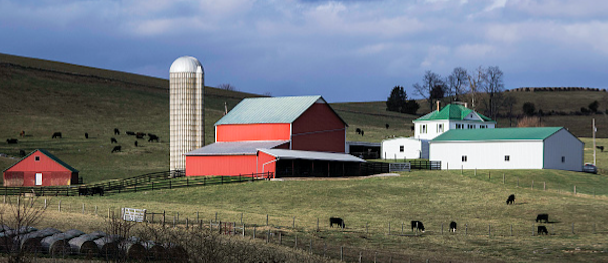You have /5 articles left.
Sign up for a free account or log in.

Getty Images
Warren Wilson College, a private institution with a reputation for a liberal student body, doesn't ask applicants for their political views.
As a result, many have wondered how the college could possibly go about meeting a goal of its president, Lynn M. Morton, to recruit and enroll more students who are conservative.
Morton announced the plan after she reviewed data from the National Survey of Student Engagement. Morton said the answer to one of the questions left her worried about the impact on all students of not having enough people around who may challenge their views. One of the questions on the survey is "During the current school year, about how often have you had discussions with people with political views other than your own?" Of Warren Wilson seniors, only 23 percent answered "often" or "very often." At colleges that Warren Wilson considers peers, the figure was 63 percent.
For Morton, a big part of the strategy has been to go rural -- and to do so in Warren Wilson's home state of North Carolina. Warren Wilson has always attracted applicants from Asheville, which is a nearby blue dot in a sea of red. But applicants from the surrounding areas have been scarce.
Of course it's true that students from rural areas (in North Carolina and elsewhere) are not all conservative. And there are plenty of conservatives in the urban and suburban neighborhoods from which competitive colleges tend to attract the greatest numbers of students. But rural voters, on average, played a key role in electing President Trump, and many say they are turned off by what they see as excessive liberalism in higher education, and especially at liberal arts colleges.
So this admissions cycle, Warren Wilson focused on rural. It added recruiting trips to high schools in rural parts of the state and refined the college's messaging. Warren Wilson has a working farm, which they played up. The college also has a strong music program that includes instruction in regional traditions such as traditional fiddling, clogging, bluegrass, banjo and more.
Early indications are that the strategy is working. The numbers aren't large, but after years of stagnant applications from some parts of North Carolina, the numbers are going up.
From western North Carolina, where Warren Wilson is located, applications jumped 57 percent, to 108. From the immediate area around the college -- Buncombe County -- applications were up 138 percent, to 50. (By comparison, total applications to Warren Wilson were up 3 percent this year.)
In an interview, Morton said the numbers show that colleges like Warren Wilson can broaden their applicant pool -- and be seen as welcoming to those who may not have looked at the institution in the past. She said that this will take sustained effort and won't change just in one year but that the college has had a good start. She plans to continue to track NSSE data to see if she finds, in future years, more evidence that students are interacting with those who hold views that differ from their own.
Warren Wilson is not alone in focusing more on rural students this year.
In Inside Higher Ed's most recent survey of admissions directors (our first after the 2016 election), only 8 percent of admissions directors said they were seeking to enroll more students who are conservative. But 28 percent of private college admissions directors and 52 percent of those at public institutions said they were trying to recruit more students from rural areas.
‘Small Towns at Swarthmore’
Another college doing more to recruit rural students -- but with a national focus -- is Swarthmore College. Its effort is called Small Towns at Swarthmore.
Tara Eames, director of admissions communications at the college, said the new effort flows from the college's ideas about diversity.
"We have always prioritized building a diverse class, knowing that diversity strengthens our classrooms and campus by encouraging dialogue among students from different backgrounds," Eames said. "Outreach to rural students is a natural extension of our mission to expand access to high-achieving, underserved and underrepresented students."
Swarthmore's new strategy starts with data. Using information from the National Center for Education Statistics, Swarthmore last year identified every public school in the country that is classified as rural or in a small town. The college then sent a series of emails about financial aid and about the Swarthmore experience, including application tips and more to students at the high schools. Printed materials followed.
While applications from this group of students remain a small minority of those to the college, this year Swarthmore saw a 25 percent increase in applications from rural public and charter high schools.
Swarthmore has also set up a program to match potential applicants from rural areas with their counterparts among enrolled students. The college reached out to 4,000 counselors nationwide at rural high schools and asked them to nominate students for an all-expenses-paid trip to the Pennsylvania campus. This is based on the reality that many people in rural areas may not have the resources or understand the reasons why they should visit Swarthmore, which is far away from many of them.
So far, 125 nominations have come in -- and others are expected before the June deadline.
While some colleges haven't recruited in rural areas, that is not the only obstacle to students from rural high schools pursuing a higher education at a nationally competitive institution. And Swarthmore is trying to draw attention to some of the other reasons. Andrew Moe, associate dean of admissions at Swarthmore, recently did a podcast for Rural Matters on this subject.
Student-to-counselor ratios tend to be high in rural high schools, and many of these high schools do not have the advanced courses in science and mathematics that are the norm at suburban high schools. While admissions officers take these things into account in reviewing applications, college officials hope that by drawing attention to these issues, they may prompt improvement in the opportunities in rural high schools.
On the podcast, Moe spoke about his work promoting diversity and access and responded to a statement that most people think of that as referring to ethnic identity. But Moe said it was about geography as well -- and not just state or country, but what part of a region.
Rural students "offer a different perspective in the classroom," Moe said. So when he thinks about diversity, rural students are very much part of the equation. "It's important that we have perspectives from across the country," he said. And that means broadening the view of diversity he typically hears about. "Often what gets lost is the rural perspective," he said.








